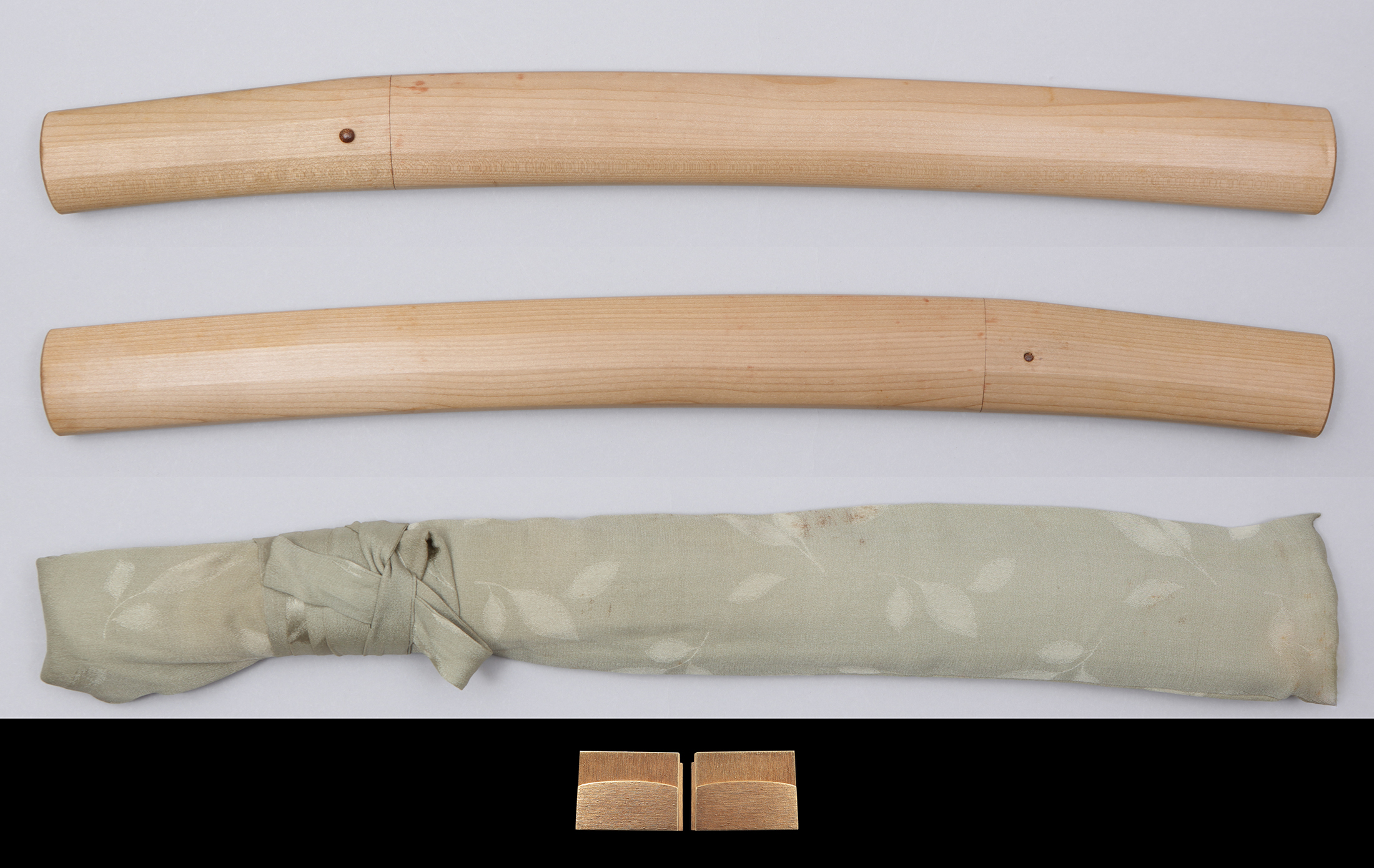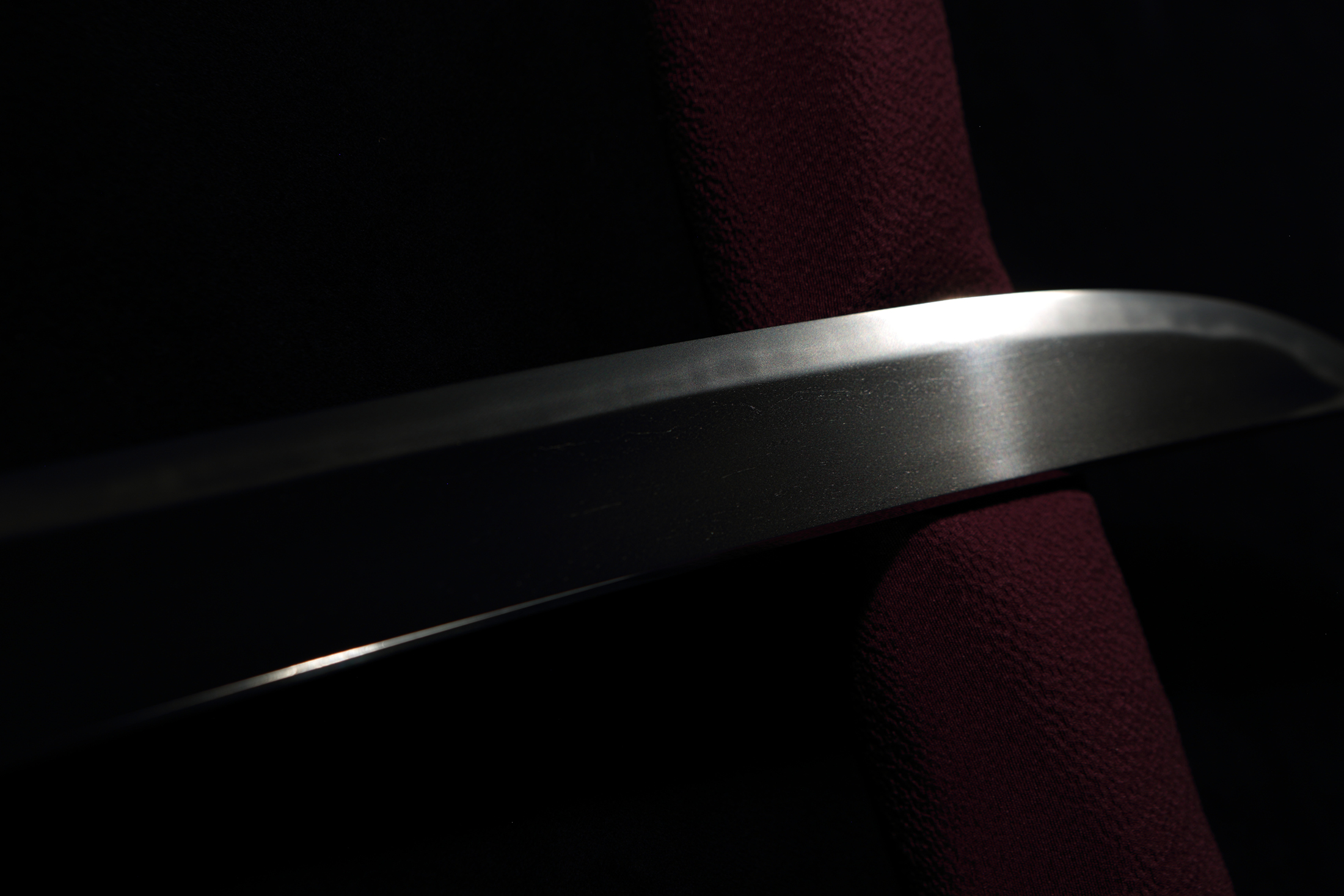
 |
Wakizashi, Shirasaya |
Sakuma Akihiro
|
[ Signature ] omote : "秋弘 平成五年二月日" ura : "相模国人渡辺伝淬刃作之"
|
[ Size ] Blade length 32.1cm (1 shaku 0 sun 5 bu 9 rin), sori 0.3cm (9 rin), moto-haba 3.50cm, moto-kasane 0.55cm, mekugi-ana(hole) 1, blade weight 293g, shirasaya length 50.5cm |
[ Period ] Heisei 5(1993) |
[ Province ] Kanagawa prefecture |
 |
[ Feature ] |
[ Attachments ] Habaki(suaka-ji, gold foiled ,double), shirasaya and bag of shirasaya. |
 |
[ Item number ] A011022 [ Price ] JPY 330,000 (shipping and insurance fee are not included) |
Please order by E-mail.

About TOUKEN KOMACHI
BACK
TEL +81-(0)3-5284-9014/ FAX +81-(0)3-5284-9043____E-mail : s_tsukada@toukenkomachi.com
Copyright © 2009-2022 Touken komachi All rights reserved. |